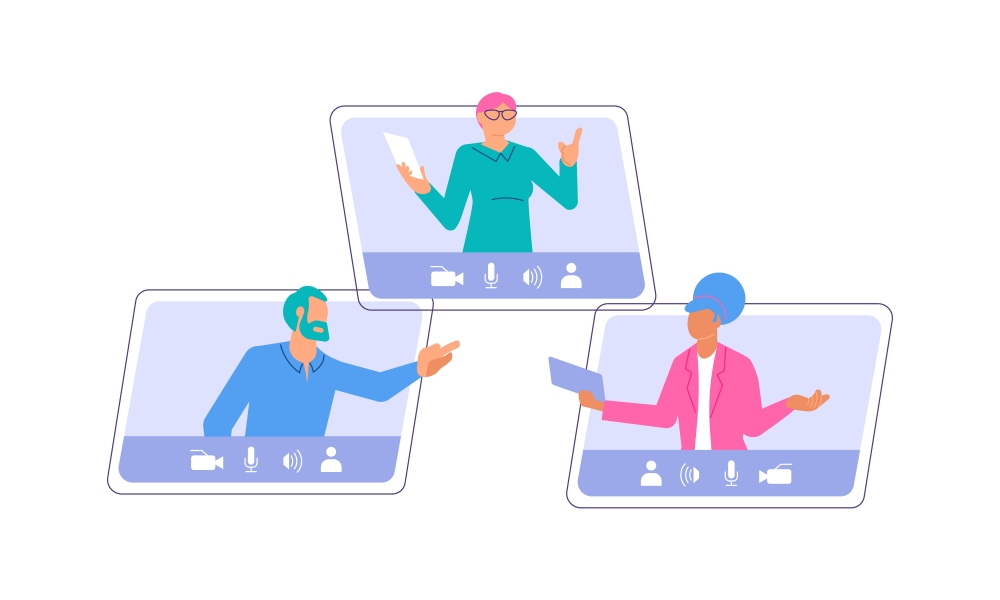
At the start of the pandemic, Harvard Business Review included a segment on their Christine Vs. Work series on how to make video meetings feel more real.
It’s normal to feel a bit strange to talk at your computer multiple times a day, and certainly our pets are still a bit concerned about this possession. However, these moments are in fact ‘real.’ They involve 3D humans on the other end and we do rely on these meetings to drive serious impact across and beyond our organizations.
So…how can you make these video moments feel more real?
Do a Quick Review Before Each Meeting
It can often feel like we are on one long video call all day. Virtually, we don’t have the luxury of walking to someone’s office, or meeting in the conference room. We are in the same physical space all day long.
We need to create differentiation before each meeting, so that they feel different from one another.
Before joining a meeting, take a moment to remind yourself what is unique or different about this meeting compared to the one before it.
Remind yourself who will be in the meeting, where did you leave off last and most importantly, what is your intention or goal for this meeting?
Ground yourself in the answers to these questions – different meetings can elicit different physiological responses in our bodies – use this to help you keep meetings distinct.
Remember the 3D Reality
Yes – a screen is 2D. You and your audience are not.
There are two things you can do to beef up the 3D nature of your video calls:
- Tune into your own physical environment and surroundings. Do you have a calm and focused workspace or are there distractions that can too easily keep you from your conversations? Do everything you can to set yourself up for focused work by starting with your physical environment. Check out our article here on physical office hacks.
- Imagine what your audience’s 3D environments might be like. Remind yourself that they also have a rich experience on the other end, that they are more than a 2D representation.
One fun way to bring this to life in a meeting is by inviting people to share one thing that is close to them that brings them joy. Whether it be a photo on their desk, or an object in their background.
Close Down Your Self-View
Over and over, professionals are having trouble with their self-view. One of the most unnatural things about video calls, is that we have a mirror image of ourselves, that is live, moving and expressing.
You don’t have to be vain to spend a significant amount of time looking at your own self-image. When we are looking at ourselves, we are de facto, not looking at our audience. We lose sight of them in our minds and we miss out on their own rich communication cues, particularly nonverbal cues.
At this stage, most video platforms have a way to hide your self-view, without removing your video entirely. Of course, we recommend having your setup solid and a strong enough level of awareness so that you can confidently stay present and engaged without having to ‘check’ yourself. Lucky for you, we have a solution for that here at Virtual Sapiens:)
In the end, as Christine Liu says, it can sometimes feel like we are on the Moon when we are in a video call. But the fact of the matter is, you are very much in the real world.
Tuning in to your personal reality, remembering there are many other 3D humans on the other end and taking some time to remove distractions (the worst offender beyond your own self-image), will all help make your video meetings feel more real.
